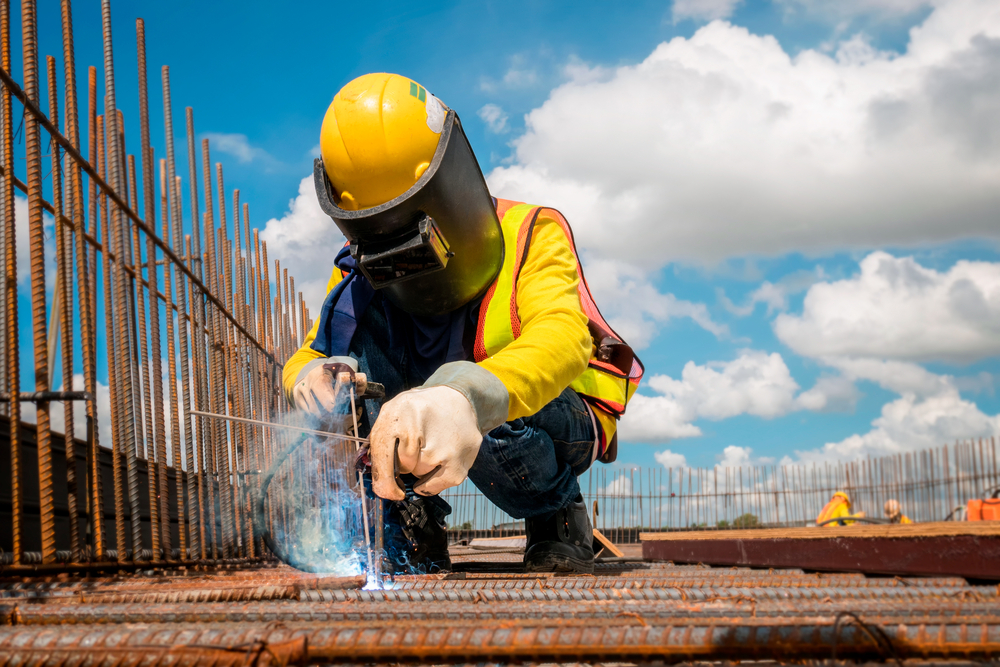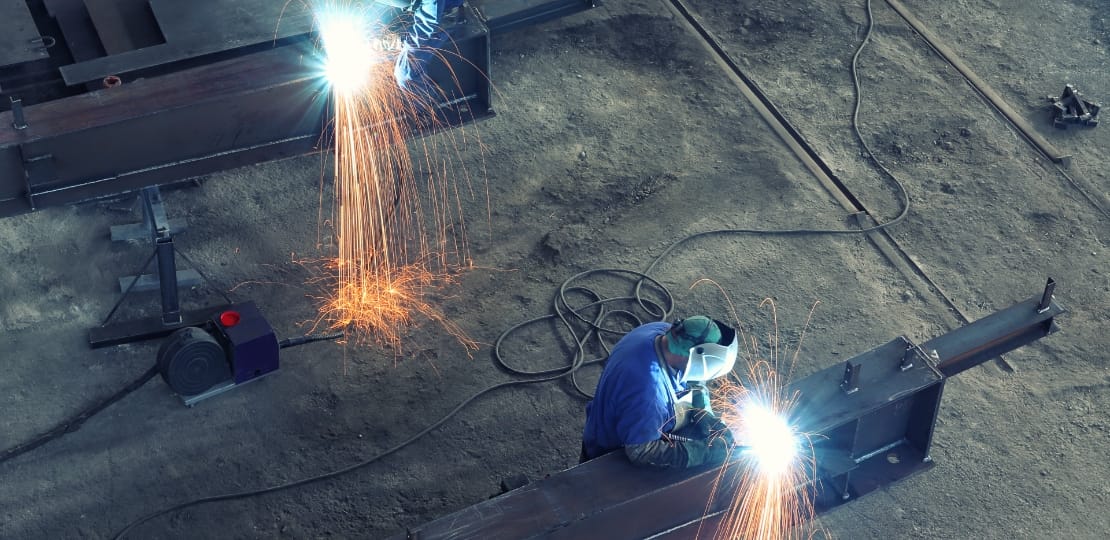Usual Welding Fixing Issues and Exactly How to Address Them Efficiently
Welding repair work often come across a variety of issues that can endanger the stability of the last product. Typical troubles include poor penetration, porosity, and misalignment, to name a few. Each issue presents distinct obstacles that call for certain techniques for resolution. Comprehending these problems is crucial for welders intending to enhance their skills and end results. This conversation will certainly check out these typical welding fixing concerns and reliable approaches to address them.
Inadequate Penetration
Inadequate penetration takes place when the weld metal falls short to fully fuse with the base product, causing weak joints and prospective architectural failures. This concern usually stems from insufficient warm input, inaccurate electrode angle, or inappropriate welding speed. Welders might run into insufficient penetration as a result of a miscalculation of the essential specifications for a details material thickness or kind. In addition, contamination on the base material's surface can prevent reliable bonding, worsening the issue. To address inadequate penetration, welders must ensure ideal setups on their equipment and keep a tidy work surface area. Normal inspection of welds is advised to determine any kind of shortages early, enabling prompt adjustments and the prevention of endangered structural integrity in bonded assemblies.
Porosity
Porosity is an usual issue in welded joints that shows up as small gas bubbles trapped within the weld steel. This defect can compromise the integrity of the weld, resulting in lowered strength and possible failure under stress and anxiety. Welding. Porosity generally arises from contamination, moisture, or inappropriate welding techniques, which allow gases to escape right into the molten weld pool. To address porosity, welders must assure appropriate surface prep work, maintain a tidy functioning environment, and make use of appropriate welding specifications. Furthermore, picking the best filler material and securing gas can mitigate gas entrapment. Normal examination and testing of welds can aid determine porosity early, assuring timely corrective activities are taken, consequently protecting the top quality and integrity of the bonded structure
Misalignment
Misalignment in welding can emerge from numerous elements, consisting of inappropriate arrangement and thermal growth. Understanding the origin is crucial for efficient resolution. Several modification methods are readily available to realign elements and ensure architectural stability.
Sources of Imbalance
Welding imbalance commonly stems from a selection of underlying problems that can compromise architectural integrity. One key reason is incorrect fit-up of components before welding, which can bring about spaces and uneven surfaces. Variants in thermal development during the welding process can also result in distortion, especially if the products being signed up with have different coefficients of expansion. Furthermore, poor fixturing and securing may fall short to hold components securely in area, leading to activity during welding. Inadequately maintained tools, including welding machines and tools, might present incongruities in the weld bead, more adding to misalignment. Finally, driver error, coming from inadequate training or experience, can likewise play a considerable role in developing misaligned welds.
Improvement Methods Readily Available
Dealing with misalignment successfully requires a mix of corrective strategies customized to the details problems at hand. One typical technique is making use of jigs or fixtures to hold components in the proper setting during welding, guaranteeing constant positioning. In addition, pre-heating the materials can help in reducing distortion and improve fit-up. For substantial misalignment, mechanical realignment techniques, such as utilizing hydraulic jacks or clamps, can be employed to correct the setting prior to welding. Post-weld heat therapy might likewise be required to ease tensions triggered by imbalance. Mindful assessment and adjustment throughout the setup phase can avoid imbalance concerns from coming to be substantial problems, advertising a smoother welding process and enhancing general architectural honesty.
Distortion
Distortion is a common difficulty in welding that can occur from various variables, consisting of unequal heating & cooling. Understanding the root causes of distortion is vital for applying reliable prevention methods. Resolving this issue not just enhances structural honesty but also enhances the general high quality of the weld.
Reasons for Distortion
When based on the extreme heat of welding, materials commonly undergo changes that can cause distortion. This sensation largely develops from thermal expansion and contraction throughout the welding procedure. As the weld area warms up, the material broadens; upon cooling, it contracts, which can create inner stresses. In addition, irregular heating throughout a workpiece can worsen these anxieties, resulting in warping or bending. The sort of material likewise plays a considerable role; steels with differing thermal conductivity and coefficients of development may respond differently, resulting in uncertain distortions. In addition, poor joint layout and insufficient fixturing can add to imbalance throughout welding, raising the probability of distortion. Comprehending these reasons is essential for efficient welding repair service and avoidance approaches.
Avoidance Techniques
Reliable prevention techniques for distortion during welding concentrate on managing warm input and ensuring proper joint design. Keeping a regular warmth input helps to lessen thermal development and contraction, which can bring about distortion. Making use of strategies such as preheating the workpiece can likewise reduce the temperature level slope, promoting uniform heating. In addition, choosing ideal joint styles, such as T-joints or lap joints, can boost stability and lower stress and anxiety concentrations. Carrying out appropriate fixturing to protect the work surfaces in location additionally help in preserving placement during the welding procedure. Ultimately, staggered welding series can distribute additional resources warm extra uniformly, stopping localized distortion. By applying these strategies, welders can greatly lower the chance of distortion and improve the total quality of their welds.
Cracking
Breaking is a typical problem experienced in welding repair work, frequently arising from different aspects such as improper cooling prices, material choice, or poor joint prep work. The incident of fractures can significantly compromise the honesty of the weld, causing possible failings during procedure. To resolve this concern, welders must initially examine the source, making certain that products work and properly selected for the certain application. Furthermore, regulating the cooling price throughout the welding procedure is necessary; rapid cooling can cause anxiety and lead to fracturing. Correct joint style and preparation additionally contribute to minimizing the threat. Executing these methods can improve weld high quality and resilience, inevitably decreasing the possibility of cracking in finished weldments.

Incomplete Blend
A substantial problem in welding repairs is incomplete fusion, which occurs when the weld steel does not appropriately bond with the base product or previous weld passes - Montana Mobile Welding and Repair Fabrication. This problem can lead to weak points in the joint, possibly endangering the stability of the welded framework. Variables adding to incomplete blend consist of inadequate heat input, incorrect welding method, and contamination of the surfaces being joined. To address this concern properly, welders ought to guarantee appropriate pre-weld cleansing and surface preparation, as well as readjust their welding specifications to attain adequate penetration and blend. Regular assessment throughout the welding procedure can also assist determine insufficient blend early, enabling timely corrective actions to improve the total high quality of the weld
Overheating
While welding repair services can enhance architectural integrity, overheating offers a substantial challenge that can result in product destruction. Extreme warmth throughout welding can change the mechanical residential properties of steels, resulting in minimized strength, boosted brittleness, and bending. This sensation is especially crucial in high-stress applications where structural integrity is paramount. Determining overheating can include visual evaluations for discoloration or distortion, in addition to keeping an eye on temperature during the welding procedure. To mitigate the dangers connected with overheating, welders ought to employ ideal techniques, such as managing heat input, readjusting travel rate, and making use of suitable filler materials. Additionally, implementing pre- and post-weld warm therapies can assist restore product homes and enhance the general quality of the repair, ensuring lasting efficiency and security.
Frequently Asked Questions
What Are the Usual Indications of a Welding Defect?

Just How Can I Check My Welds for Top quality?
To klutch welder evaluate welds for quality, one can utilize visual inspections, ultrasonic testing, and radiographic techniques. Each method assures structural integrity, recognizes linked here issues, and confirms adherence to defined standards, inevitably boosting the dependability of the bonded joints.
What Safety and security Preventative Measures Should I Take While Welding?
When welding, one must prioritize safety by putting on proper personal protective tools, ensuring correct ventilation, safeguarding flammable materials away, maintaining a tidy office, and recognizing environments to stop crashes and injuries.
Can I Repair a Weld Without Redesigning the Entire Joint?
Repairing a weld without remodeling the entire joint is feasible, depending on the damage (Montana Mobile Welding and Repair Fabrication). Techniques such as grinding, adding filler material, or using a welding process can successfully address certain flaws while preserving the bordering structure
What Tools Are Necessary for Efficient Welding Fixes?
Necessary devices for effective welding fixings include a welding maker, wire brush, grinder, safety equipment, clamps, and filler materials. Each tool plays an essential role in ensuring top quality and security during the repair service procedure. Porosity generally occurs from contamination, moisture, or improper welding methods, which allow gases to leave right into the molten weld pool. Improperly kept tools, including welding makers and tools, might introduce variances in the weld bead, further adding to imbalance. When subjected to the extreme warm of welding, materials frequently go through adjustments that can lead to distortion. Cracking is an usual concern encountered in welding repair work, usually resulting from different factors such as incorrect cooling prices, product option, or inadequate joint prep work. A considerable problem in welding repair work is incomplete fusion, which occurs when the weld steel does not effectively bond with the base product or previous weld passes.